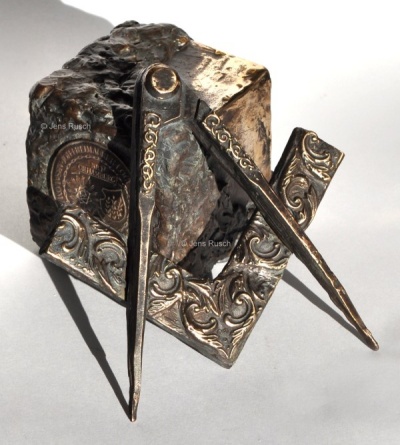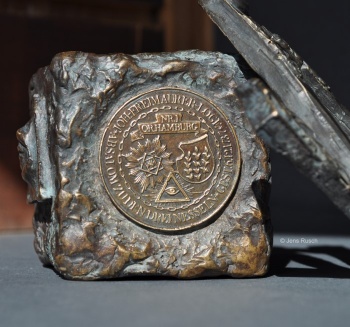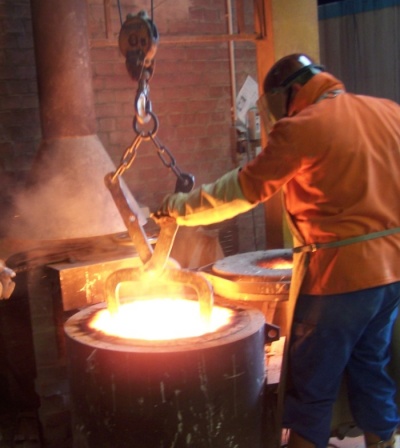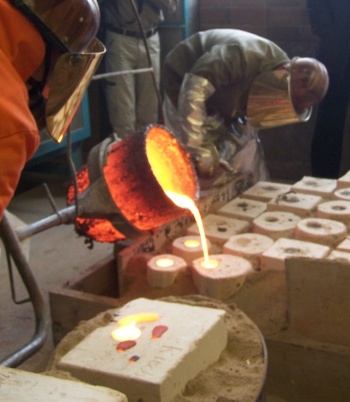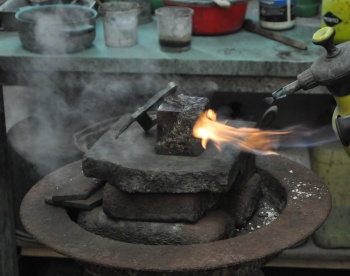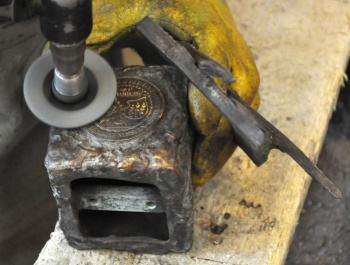En:Workshop Royal Art: Unterschied zwischen den Versionen
Aus Freimaurer-Wiki
Keine Bearbeitungszusammenfassung |
Keine Bearbeitungszusammenfassung |
||
| (Eine dazwischenliegende Version von einem anderen Benutzer wird nicht angezeigt) | |||
| Zeile 20: | Zeile 20: | ||
[[Datei:Rauhe Bronze.jpg|thumb|400px|Finally , there is a rough stone, all cast in bronze, in front of us. The height is now 14 cm and the diagonal to the tip of the compass 19 cm. The ornate symbolism takes us back a bit into the origins of German Freemasonry.]] | [[Datei:Rauhe Bronze.jpg|thumb|400px|Finally , there is a rough stone, all cast in bronze, in front of us. The height is now 14 cm and the diagonal to the tip of the compass 19 cm. The ornate symbolism takes us back a bit into the origins of German Freemasonry.]] | ||
== Number of copies == | == Number of copies == | ||
The engraved numbering will be provided after receipt of order. Favourite numbers can be engraved only in exceptional cases. Each copy signed by the artist. Engraved dedications to customer's requirements at no extra cost. | The engraved numbering will be provided after receipt of order. Favourite numbers can be engraved only in exceptional cases. Each copy signed by the artist. Engraved dedications to customer's requirements at no extra cost. | ||
== Delivery time == | == Delivery time == | ||
The cast will be commissioned only after receipt of order. The delivery time is entirely dependent on the order situation of the bronze foundry. It is therefore advisable to anticipate a longer delivery time. | The cast will be commissioned only after receipt of order. The delivery time is entirely dependent on the order situation of the bronze foundry. It is therefore advisable to anticipate a longer delivery time. | ||
== Links == | |||
== Links | |||
*[[Absalom zu den drei Nesseln]] | *[[Absalom zu den drei Nesseln]] | ||
*[[Georg Wilhelm Ludwig von Oberg]] | *[[Georg Wilhelm Ludwig von Oberg]] | ||
| Zeile 42: | Zeile 32: | ||
*[[Absaloms Namen]] | *[[Absaloms Namen]] | ||
*[[Traktat: Georg Wilhelm von Oberg]] | *[[Traktat: Georg Wilhelm von Oberg]] | ||
[[Kategorie:Art|Workshop]] | |||
Aktuelle Version vom 8. Februar 2013, 17:22 Uhr
Workshop "Royal Art"
Thanks for translation to Bro Edward Schmidt-Zeuner
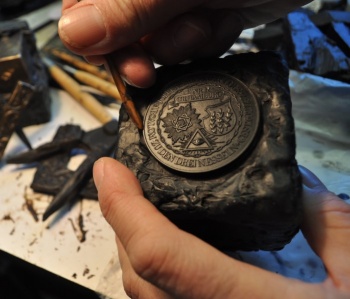
Each bronze is preceded by a wax model in the studio of Jens Rusch. He is using paraffin, dyed with black soot. By applying this process one can best assess the plasticity and the bronze shine at a later stage. This subject existed already in a similar form, but with a symbolism related to the Entered Apprentice degree. At the occasion of the significant anniversary a clear reference to the German prime lodge "Absalom" was added.
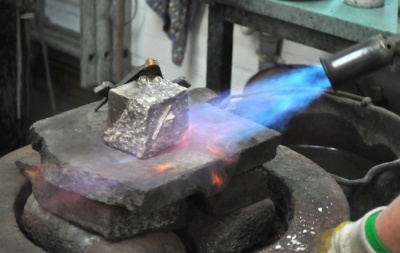
In order to give the necessary patina to the sculpture, which is freed from the fire clay shell, the figure is again heat treated to a high temperature. The patination process is usually done by nature, as one can see on church roofs turning green. In this case the process is just accelerated by application of heat and various acids.
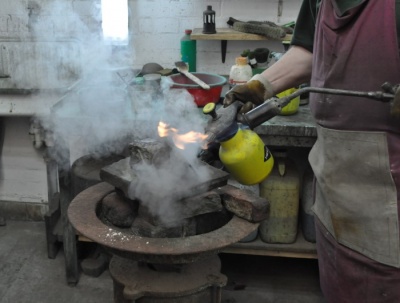
Acid is now injected into the glowing figure basing on own recipes. An unhealthy process. Depending on the composition, a patina changing into black-brown or the well known green patina of church roofs can be achieved. At this point, the patineur becomes an alchemists and the notes in the workshop books do not vary significantly from those of the colleagues in the Middle Ages.
Number of copies
The engraved numbering will be provided after receipt of order. Favourite numbers can be engraved only in exceptional cases. Each copy signed by the artist. Engraved dedications to customer's requirements at no extra cost.
Delivery time
The cast will be commissioned only after receipt of order. The delivery time is entirely dependent on the order situation of the bronze foundry. It is therefore advisable to anticipate a longer delivery time.

